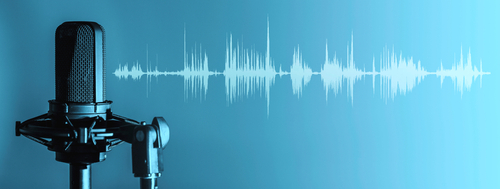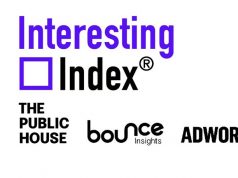 So, you want to start a podcast for your brand or perhaps you have a great idea for a series of podcasts. Before you start, you should look under the hood to see if the numbers add up writes Daryl Moorhouse
So, you want to start a podcast for your brand or perhaps you have a great idea for a series of podcasts. Before you start, you should look under the hood to see if the numbers add up writes Daryl Moorhouse
Trying to figure out how to make money from podcasting is like peering into a brimming barrel of murk. Platform fees, programmatics, advertising, patreon subscriptions – where does one begin?
Perhaps here.
Like many media people, I’ve always been intrigued by the question “how do you make money from podcasting” – intrigued by how frequently it’s asked, disappointed by how rarely it’s answered. Questions repeatedly asked are the ones worth answering and it happens to feel like a good jumping off point for this series of IMJ/Adworld articles. And so, headlong into the murk we go.
Last year, Acast fanfared their payments to Irish podcasters over the last four years – with a total of €7m (circa €34k per month) variously distributed. While €7m sounds like a chunk of change but it’s important to consider that revenue is split across all of Acast’s participating Irish podcasters. Only Acast knows how many ways the podcast pot is split but it’s a point of irrelevance for most podcasters, most of whom don’t make any money at all.
The low financial investments and technical barriers to entry have seen a proliferation of podcasters and podcasting networks competing for earbuds and audiences alike – making revenue an objectively difficult ambition.
Difficult but not impossible.
Any good marketer knows if you want to realise a goal you need to visualise it. In this case, we’ve visualized it for you in the form of the Podcast Profitizer.
Using best-available industry metrics and some complicated estimations, we’ve compiled an interactive document designed to help the average podcaster work out how much money they might expect to make and how they might spin revenue into profit.
Because everyone’s podcast mileage may vary and for optimum benefit, this article should be read in tandem with our online interactive Podcast Profitizer where you can plug the numbers that best suit your bespoke pod scenario.
Most programmatic advertising providers will give you a reasonable overview of what revenue you might generate but income is only half of the picture. The other half is expense. Both need to be weighed in equal measure and no provider will give you full insights on the latter.
Potentially, your podcast income comes from the ability to connect advertisers’ messages with your audience. The more podcasts you publish per month the more airtime or advertising inventory you’re creating. Cost Per Mille (CPM) is the rate advertisers pay to air their ads on your pod. A CPM of €10 means that you’ll receive €10 for every 1,000 ads that are heard to on your podcast.
If that sounds complicated, don’t worry. You don’t need to be a spreadsheet svengali. Just plug your numbers into the Profitizer and it will autocalculate.
Remember, advertising isn’t the only copper to be mined. If you can find a loyal flock, subscriptions and sponsorship are also options. Sponsorship fees are hard to quantify but Patreon gives us a marker for subscriber revenue. We’ve split the difference on their estimated conversion rate and gone with 1.5%. For every 100 listeners you might expect that 1 or 2 will be willing to pay for a monthly membership for additional content, exclusive content etc. There are also the likely but intangible benefits of profile and personal brand elevation, which are worth considering but hard to quantify.
In 20 years, I would be hard pressed to think of a job where I hadn’t under-estimated the time required to complete a labour of love. Passion pieces are by their nature the most time consuming.
For those reasons the time you take to produce your podcast shouldn’t be misjudged. A 30-minute podcast will easily take a minimum of three hours allowing for research and prep, record, edit, show notes distribution and that’s before anyone touches marketing. Fill in the relevant dropdowns as well as the hourly rate you’d like to be paid to estimate expenses and overall profitability.
We’ve built The Podcasting Profitizer as an exercise in understanding and as an attempt to tackle the question that wouldn’t go away. The aforementioned murk means that there may be more caveats than conclusions, numerous variables and permutations skewing things in numerous directions.
Podcast platforms are not always opaque about advertising revenue, so cost per mille (CPM) is a best guess and debatable. Your production and marketing hours may vary depending per episode or per series or may decrease over time. Tax take will vary depending on your own personal circumstances. And so on….
The Profitizer could be accurate but is in no way definitive. If you’re going to use it, adapt the dropdowns to your circumstance and do so in order to give yourself a sense of what the path to profitability might look like. Of course, there are plenty of podcasters who don’t want or need that vision. Podcasting has so many other personal, creative and expressive benefits and profitability should never be the measure of success in any creative or artistic endeavor.
Podcasters aren’t Wall Street brokers and I haven’t yet met one whose primary concern is quarter-on-quarter incremental financial improvements. That being said, it might be nice to land at the crossroads where culture and commerce intersect, and you can bank some pennies for your thoughts.
Daryl Moorhouse is the founder and owner of Tinpot Productions





















